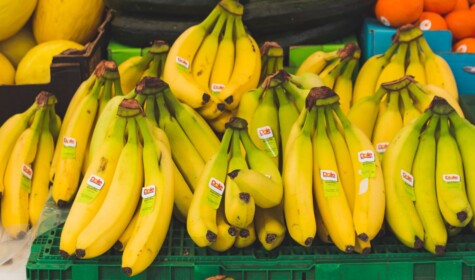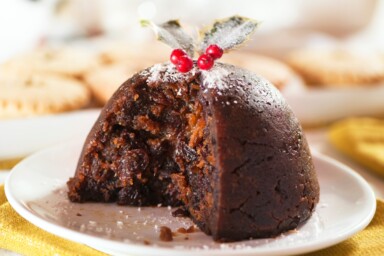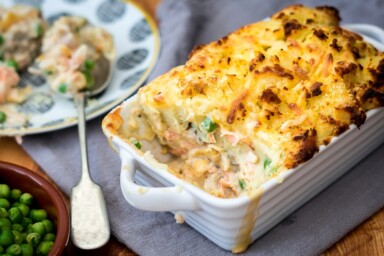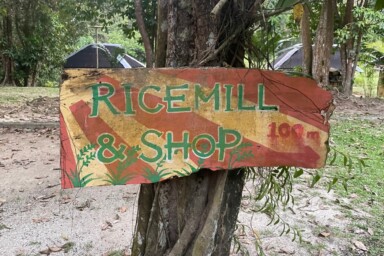Joanna Blythman explains the five foods that she no longer eats, and why.
Factory-farmed chicken
My aversion to factory-farmed chicken is visceral as well as philosophical and ethical. It’s one thing to read about the sordid conditions in which these ‘broiler’ chickens are reared, quite another to witness it first-hand.
We had managed to talk our way into an intensive chicken shed in the middle of England – quite a coup, in fact, as producers generally don’t like the public seeing what goes on. The people who ran it, let us in because they were pretty proud of their operation: it was more spacious, less densely stocked with birds than most. But for me it was a vision of chicken hell, a football pitch sized shed, dimly lit, with what looked like a moving white carpet. Only when our eyes adjusted could we see that the carpet was actually a sea of birds, so packed in that we couldn’t tell where one started and the other stopped. No way would they be able to run around as chickens naturally would.
The place smelled of ammonia and damp sawdust, rather like a badly run pet shop. The air quality – a hot, fetid fog of circulating dusty particles – was choking. No wonder factory-farmed chickens suffer so badly from respiratory infections. I found the air unbreathable. Even with a mask on, I could only take a few minutes of it until I started coughing.
Just before I headed for the door to fill my lungs with fresh air, a worker appeared doing his daily job of walking through the seething mass of chickens, picking out those that were dead and putting them into a bucket. Factory-farmed chicken has a routine toll of casualties caused by a range of problems: aggressive pecking that is characteristic of poultry kept in stressful, low welfare environments; various diseases and infections that dog intensive poultry production methods; and the nasty leg ailments (broken bones, sores) that stem from lack of exercise and standing in faeces-soiled litter that progressively gets dirtier throughout the birds’ truncated lives.
And yet, the sad ‘crop’ of these repellent chicken outfits is ubiquitous. On supermarket shelves, you’d have to hunt for that infinitely smaller display of supposedly ‘free-range’ chicken, and an even smaller section with organic chicken, if you’re lucky.
Factory-farmed chicken accounts for a hugely disproportionate number of ready meals and convenience foods. Urban parades are lined with fried chicken shops, the pavements around them littered with bones. Chain restaurants champion this miserable meat, as do school and hospital caterers. When you see the anonymous word ‘chicken’ on a menu without any accompanying qualification, it’s most likely this debased, poorly treated animal. Our food environment seems to beckon us to eat cheap chicken again and again, several times a week, even daily – a chicken sandwich for lunch is followed by chicken tikka for dinner.
Government ‘healthy eating’ guidelines promote chicken as a healthier alternative to red meat, even if the former is reared intensively, and the latter extensively. Chicken, however badly and cheaply produced, counts as healthier than red meat, we’re told, because it is lower in fat – but I think this is spurious. None of this, cuts any ice with me. I won’t allow factory-farmed chicken over my doorstep or knowingly eat it anywhere else for that matter. I have seen the stinking, unsanitary, cruel conditions in which it is reared, and it doesn’t qualify in my book as clean, wholesome food.
Refined vegetable oil
There was a time when I used the standard odourless, flavourless cooking oil that lines our shelves. I had taken on face value, the received wisdom that it had its place in the kitchen for certain culinary uses, notably frying. But I was puzzled by the recommendation to use it for mayonnaise. Ever tried sipping a teaspoon of ‘pure’ vegetable oil? It’s pretty revolting. There’s no inherent flavour to balance the oiliness. This is why a carrot cake made with vegetable oil is deeply inferior to one made with butter.
I soon started using extra virgin olive oil instead. My mayonnaise only improved. Contrary to the received wisdom, the olive flavour wasn’t too dominant, for my taste at least. Then I started to unpick this received wisdom about oils. I never accepted the now heavily-challenged nutritional mantra that animal fats – lard, dripping, goose and duck fat, ghee – were less healthy than vegetable oils (tree, seed or cereal derived). From a cook’s perspective these are stable oils. They rarely go rancid and they have a high ‘smoke point’, so they don’t burn easily.
But I had swallowed the line that it was a waste to use quality oils of provenance for high temperature cooking because they burned. A process of observation led me to realise that you can use extra virgin olive oil for shallow frying. The art is adding the food before the oil gets too hot, then leaving it to form a crust before you start trying to turn it over. This technique even works with falafels.
The cheapness of ‘pure’ vegetable cooking oil – as little as 70p a litre – suggests that it isn’t likely to be a high-quality substance. Some oils specify one source. Sunflower or groundnut, for example, sound better than ‘pure vegetable’, usually a blend from sources such as rapeseed, corn, safflower and soybean, the latter mostly grown using GM crops.
These days, most vegetable oils sold in the UK use rapeseed. The bad news for all those who promote rapeseed oil as the local alternative to imported oils, is that rape is typically grown using regular treatments of chemical fertilisers that have a habit of ending up in the local watercourses. It is also a notoriously pesticide-dependent crop.
Irrespective of source, when I scrutinised such oils in depth, any notion of purity seemed misleading. They are known in the trade as RBD oils, short for ‘refined’, ‘bleached’ and ‘deodorised’. They owe their neutral flavor and prodigious keeping quality to a thoroughly industrial refining process. The oil seeds are crushed, and the oil is extracted using chemical solvents, usually hexane. They are then ‘degummed’ with the aid of either acids or enzymes. The oil is hot by this point and doesn’t smell so good; it’s also darkened in colour, so it must then be bleached. Following this, it will be deodorised. This entails heating it to an even higher temperature, usually over 200 degrees centigrade, at least twice. These ultra-processed industrial oils acquire a benign aura that they most certainly do not merit, largely because they come from non-animal sources.
We’re only just beginning to clock the damaging impact they have on health. Bear in mind that when we’re told our taste for fried, fatty food is making us obese, we’re not talking about the animal fats that have sustained us down the centuries – we eat less of them than ever before. It’s the products that are fried in these modern ‘vegetable’ oils – crisps, battered fish, chips, and much more – that are making us fat. Meanwhile the intensive methods of industrial farming – prairie monocultures that deplete soils and GM crops – provide the raw materials destined for such oils, and their impacts are ignored in the rush to embrace ‘plant’ foods as a more environmentally friendly alternative to animal foods. Knowing all this, refined vegetable oil has no place in my food.
Farmed salmon
For me, salmon farming is the marine equivalent of land-based intensive farming. Vast concentrations of closely packed fish genetically programmed to swim the oceans are confined to underwater cages, a huge restriction on their lives in the wild. They’re fed on pelleted food made from ground-up wild fish with added vitamins, minerals, and binders such as wheat flour and soya, none of which figure in the diet of a wild fish. Salmon and trout usually have chemical colourings added to their feed because they don’t eat the varied diet of wild seafood that would naturally give their flesh its attractive pink hue.
Fish farmers present their industry as the saviour of wild fish. They claim that they are helping to take the pressure off endangered wild stocks by offering the farmed equivalent – but globally, fish farming has been identified as a net reducer of fish stocks. Farmed salmon are fed on pelleted food made from stocks of smaller fish further down the marine food chain, anything from three to five times their body weight in wild fish.
In Scotland and Ireland, fish farming is a significant contributing factor in the worrying reduction in numbers of wild salmon and sea trout. Escapee fish from fish farms infect wild fish and interbreed with them, so reducing their ability to cope in the wild.
Large populations of farmed fish, just like land-based factory farms for livestock, are a magnet for disease. Sea lice infestations are endemic on fish farms and many farmed fish suffer sporadically from diseases that plague caged fish production, such as infectious salmon anaemia, amoebic gill disease and salmon gill poxvirus. The mortality rate on Scottish salmon farms is around 26%. Chemicals piled into waters in a vain attempt to keep a lid on disease and infestation are another cause for concern. These include hydrogen peroxide – essentially bleach – and emamectin benzoate. This latter chemical is known to kill lobsters.
Another harmful environmental impact of fish farming is the thick layer of uneaten feed and faeces that often settles below the cages. This reduces water quality, which harms wild shellfish and other marine wildlife.
In a couple of respects, organic farmed salmon isn’t as bad. Their feed isn’t artificially coloured, it’s made using fish waste – blood, guts, tails and heads of fish that were harvested for human consumption and have been certified as sustainable. But even organic salmon have the flabby body tone and herringbone of white fat characteristic of this debased form of aquaculture. Farmed salmon, to me, is a tragic travesty of a wild fish. I won’t eat it.
Bananas that aren’t Fairtrade
Why buy any old bananas when you can choose Fairtrade? I’ve travelled in the Caribbean, Ghana and Costa Rica learning about how this most popular fruit is grown for our tables. What we need to realise is that most global fruit production is pretty shocking. Plantation workers are forced to work long hours in dangerous, gruelling conditions. Hazards include: indiscriminate aerial spraying of pesticides that often end up on workers; pay pegged to unreasonable targets; shanty town accommodation with inadequate sanitary facilities; 12-hour days with extended travelling times; victimisation, and even murder of workers and union activists who challenge management.
The only robust alternative is Fairtrade. I have met many Fairtrade growers who told me of the tangible difference this more equitable model of global trade makes to their lives. It’s not just that Fairtrade growers are guaranteed a minimum price for their products, that shields them from fluctuating market prices, it’s also that they earn a ‘social premium’: extra funds earmarked for community projects of their choosing. For instance in Ghana, on what was the world’s first Fairtade plantation, the extra revenue from Fairtrade funded the building of a school, an operating theatre in the local hospital, potable water storage tanks in three villages and educational grants for workers’ families.
What struck me particularly in Ghana was how worker empowerment programmes, run by local trade unions in collaboration with Fairtrade organisations, were transforming womens’ lives. Female workers on Ghana’s Fairtrade plantations, even when hired on a temporary basis, enjoy working conditions that many UK women would envy: a written contract; a guaranteed minimum wage; an eight-hour day (with an hour’s break, or two for breastfeeding mothers); three months paid maternity leave; paid public holidays; two weeks paid annual leave; even paid sick leave. The evolving Fairtrade model is now moving to tackle other under-recognised problems, such as sexual harassment by foremen. On many plantations around the globe, women are scared to take the generally higher paid field jobs because that exposes them to assault.
There are, of course, alternative, progressive-sounding schemes to Fairtrade: Rainforest Alliance, Cocoa Life, Waitrose Foundation, M&S Field 2 Fork and Tesco Nurture. None of these certification schemes delivers the two key promises of Fairtrade proper: a guaranteed minimum price for growers and the “social premium”.
My first-hand experience convinces me that Fairtrade is the most ethical, most progressive choice available to us, and worth every penny. Unless you’re on an austerity budget – and sadly too many people are – then Fairtrade bananas, even though they cost a bit more, are still highly affordable. Buy them loose and there’s no plastic bag to clog up the environment.
Supermarket in-store bakery bread
For years now, I haven’t eaten the standard ‘wrapped and sliced’ industrial loaves that line store shelves. Limp-crusted, clammy, inflated with air and the texture of loft insulation, ultra-processed bread that includes up to 26 different hi-tech ingredients and additives? No thanks. And that’s before you think about all the unlabelled ‘processing aids’ – notably man-made enzymes – that are used behind the scenes to increase volume and extend ‘freshness’, among other things.
But at least you know what you are getting, as all this is detailed on the label, which is more than you can say for the in-store ‘bakery’ equivalent sold in supermarkets and takeaway chains. Unlike the pre-wrapped bread, in-store baked products don’t have to carry ingredient labels. The Real Bread Campaign worked hard to expose this ‘Great British Fake-Off’: such operations are really little more than tanning parlours for chilled or frozen, factory-manufactured dough items that are merely ‘baked off’ on site, following a push-button programme. Most supermarket shoppers are still unaware of this and believe that when they buy from the store’s ‘bakery’, they’re getting bread made from scratch.
What’s just as bad about this legal smoke-and-mirrors trade, is the fact that the contents of these products are largely inscrutable. Products from such bakeries, must flag-up allergens, but neither ingredients nor additives need to be detailed on these loaves. This is a staggering exemption, a loophole in labelling law that needs to be closed.
You might think that the composition of products from in-store bakeries would be much the same as the pre-packs on the shelves, but you’d be wrong. When I researched them, supermarkets weren’t prepared to provide me with detailed ingredient and content listings for individual products. I used my journalistic skills to access the product information sheets. These are not open to the general public. What I learned is that in many cases, in-store bakery products contained more additives and low-quality, hi-tech ingredients than the pre-packed equivalent. A ‘raspberry jam filling’ (for doughnuts and Danish pastries) was an amalgam of sugar syrup, raspberry purée, pectin, citric acid and calcium chloride E509, a ‘sequestrant’ chemical that acts as a preservative and firming agent. The custard in the pain aux raisin had never seen an egg. Instead it was made from water, sugar, modified potato starch, dry whey (a milk protein), dried milk, maltodextrin (a starch that helps increase volume to create what food manufacturers refer to as ‘a rich mouthfeel’), xanthan gum (a gluey thickener), a product charmingly called ‘spent vanilla seeds’, as well as synthetic flavouring and colouring.
In-store bakeries are hoodwinking us. It’s time to call them out.
This article was originally published in May 2018.







